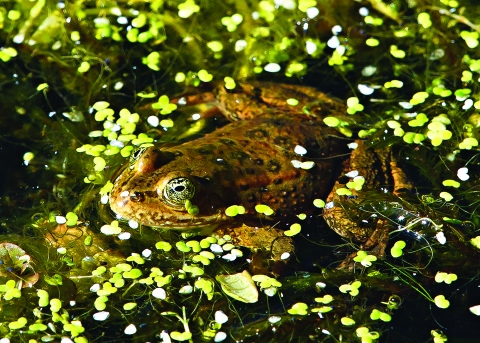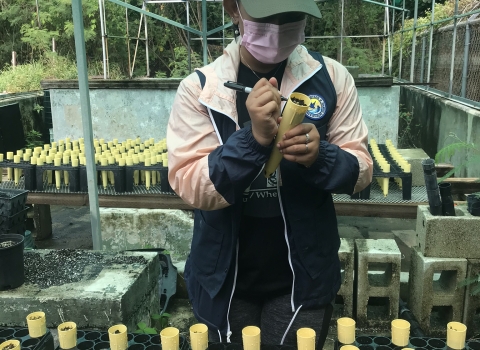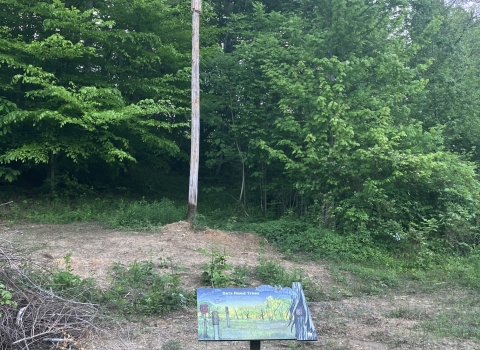Totally covered in mud. That’s how one biologist fondly remembers the hard-working, happy warriors of the Whatcom County Amphibian Monitoring Program (WCAMP), named a 2020 Recovery Champion by the U.S. Fish & Wildlife Service. “They spent weekends in the wetlands, creating pools and channels. They were putting in the time, doing the work.”
The group was awarded the Recovery Champion title for 2020 based on their outstanding (and occasionally messy) efforts to conserve the Oregon spotted frog in the northwest corner of Washington State.
Even before the Oregon spotted frog was listed as threatened under the Endangered Species Act in 2014, WCAMP was already working hard to protect it and other amphibians in Whatcom County. Project Manager Vikki Jackson has worked as a wetland ecologist for over a quarter century and Lead Scientist Dr. Stephen Nyman has been studying and observing amphibians for even longer. According to Jackson, Dr. Nyman, “knows every single frog out there.” The program first got started in 2011, with one of its first efforts being the creation of a database of amphibian distribution in the county. With occasional mosquito bites as battle scars and soggy boots as a badge of honor, they continue to fight for the survival of the Oregon spotted frog species.
In addition to conducting surveys to locate and track Oregon spotted frog populations, WCAMP has also invested in long-term habitat improvement and scientific investigations to help the species flourish. One way they’ve done this is by removing invasive grass to create the perfect pools of water that can be utilized by the most aquatic frog in the Pacific Northwest. Reed canary-grass is an invasive species invasive species
An invasive species is any plant or animal that has spread or been introduced into a new area where they are, or could, cause harm to the environment, economy, or human, animal, or plant health. Their unwelcome presence can destroy ecosystems and cost millions of dollars.
Learn more about invasive species that covers bodies of water more than two-feet deep in a dense mat of roots and thatch, denying access to the aquatic habitat underneath. The plant can completely choke out other vegetation in a given area. WCAMP teams do the work of removing patches of the suffocating grass to expose the water below. After areas of water are opened up, native plant species begin to establish in the pools, and amphibians like the Oregon spotted frog soon move into the newly refurbished real estate.
There is a human element to WCAMP’s success, too. WCAMP has done significant amounts of public outreach and education to help the Whatcom community better understand amphibians. They’ve recruited volunteers for surveys, habitat management, and built bridges with local property owners. Their work has helped change how the species is viewed by the local community. As Biologist Teal Waterstrat with the U.S. Fish & Wildlife Service put it, WCAMP has “changed the game.”
WCAMP continues to work to ensure that choruses of native frogs serenade Washington State long into the future. In the near term, the group is planning more habitat restoration in the field and is currently seeking enthusiastic volunteers interested in more “mudslinging.” The program will also be using a variety of methods to detect the presence of invasive frog species such as bullfrogs. They will deploy audio recording devices at select locations in the county to record frog calls and enlist volunteers to report the sounds of the invasive species.




